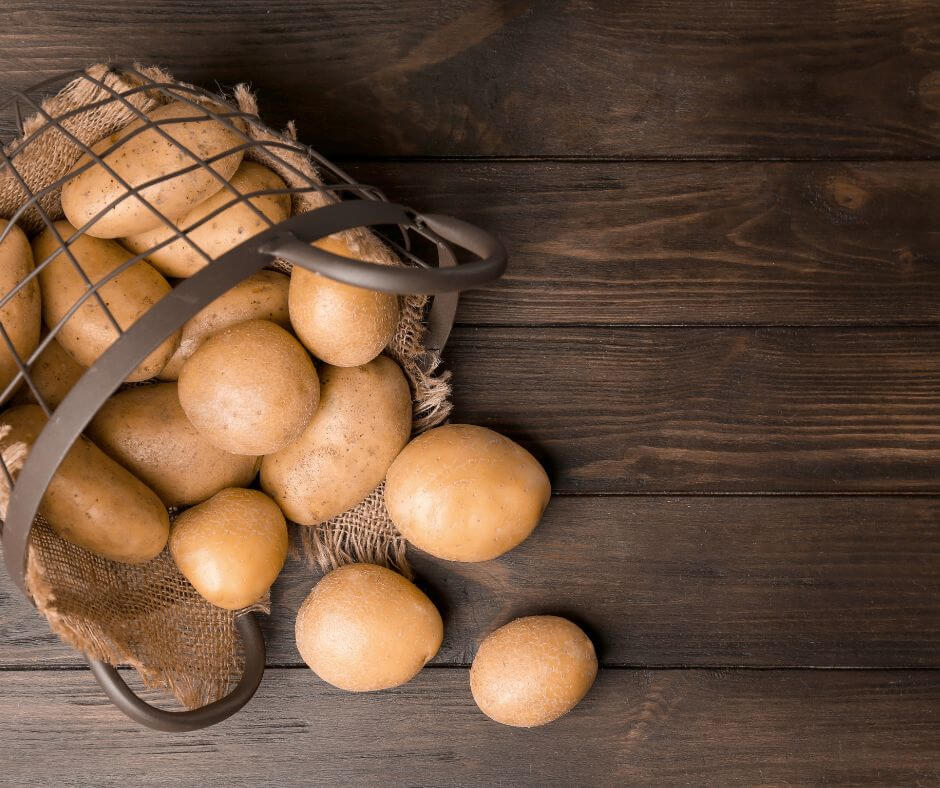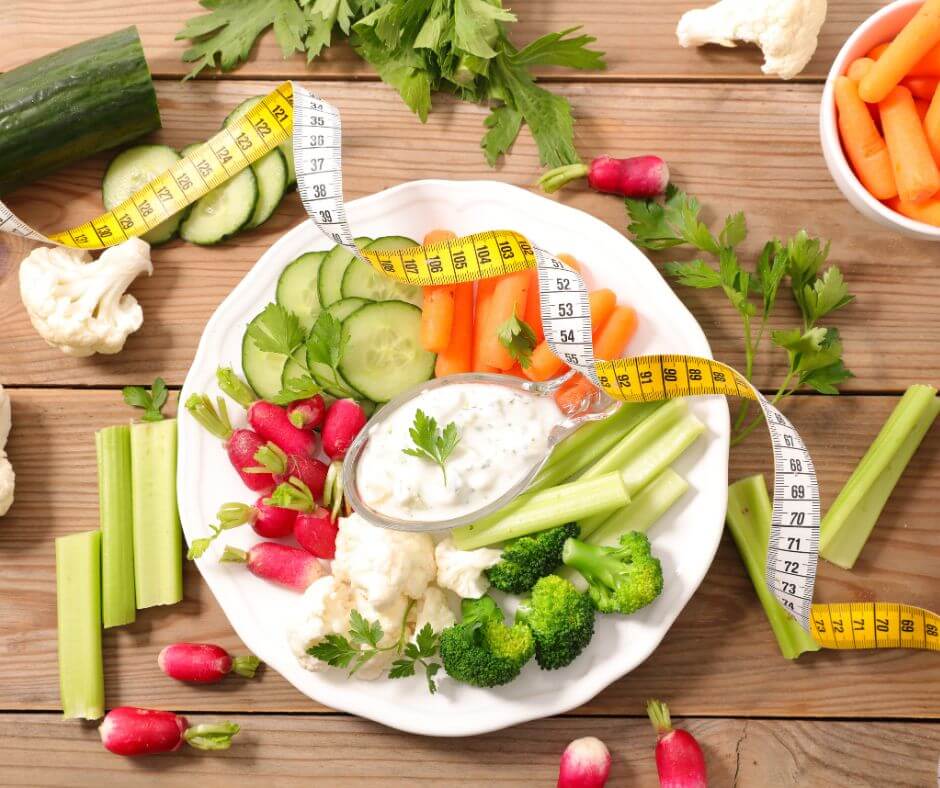Which potato is the healthiest ? In this blog, we’ll compare the nutritional benefits of three popular types of potatoes: sweet potatoes, white potatoes, and purple potatoes. First, we’ll explore the unique qualities of each potato, including its taste, texture, and appearance. Then, we’ll dive into the nutritional profile of each potato, including its vitamin and mineral content, fiber, and carbohydrate levels.
Through this analysis, we’ll reveal which potato is the healthiest option for your diet and explain how you can incorporate it into your meals. Whether you’re looking for a low-carb option, a good source of fiber, or a vitamin-rich addition to your plate, this blog will provide you with the information you need to make an informed decision.
Importance of choosing a healthy potato

Choosing a healthy potato is important for several reasons. First and foremost, potatoes are a significant source of carbohydrates, which provide our bodies with the energy we need to function properly. However, not all potatoes are created equal, and some varieties contain more nutrients than others.
Sweet potatoes are high in vitamins A and C, which are essential for maintaining healthy skin, eyesight, and immune function. White potatoes are a good source of potassium, which is important for regulating blood pressure and maintaining proper nerve and muscle function. Purple potatoes contain anthocyanins, which are potent antioxidants that may help reduce the risk of chronic diseases.
Furthermore, choosing a healthy potato can also help you manage your weight and blood sugar levels. Sweet potatoes, for example, have a lower glycemic index than white potatoes, which means they are less likely to cause spikes in blood sugar levels. Selecting the right potato can help you optimize your nutrient intake, maintain a healthy weight, and reduce the risk of chronic diseases.
Sweet Potatoes

Sweet potatoes are nutritious and delicious root vegetables that are commonly enjoyed around the world they have a slightly sweet flavor and a soft, creamy texture, which makes them a popular ingredient in both sweet and savory dishes. The following are some of sweet potatoes’ main nutritional advantages:
Vitamin A:
Sweet potatoes are an excellent source of vitamin A, a nutrient that is essential for maintaining healthy eyesight, skin, and immune function. A medium-sized sweet potato contains more than 400% of the recommended daily intake of vitamin A.
Vitamin C:
Sweet potatoes are also high in vitamin C, another important nutrient for immune function and overall health. One medium-sized sweet potato provides more than 35% of the recommended daily intake of vitamin C.
Fiber:
Sweet potatoes are a good source of dietary fiber, which helps promote healthy digestion and can also help you feel fuller for longer. A medium-sized sweet potato has about 4 grams of fiber per serving.
Potassium:
Sweet potatoes are a good source of potassium, a mineral that plays a key role in regulating blood pressure and maintaining proper nerve and muscle function. One medium-sized sweet potato contains approximately 450 milligrams of potassium.
Description and Appearance
Sweet potatoes are root vegetable that belongs to the same family as morning glories. They are native to Central and South America but are now widely cultivated in many regions of the world. Sweet potatoes have a tapered shape and smooth, thin skin that can range in color from light tan to dark brown. The flesh of sweet potatoes can vary in color from white to orange to purple, depending on the variety.
In terms of size, sweet potatoes can range from small and slender to large and chunky. They typically have a creamy, starchy texture and a slightly sweet flavor that is sometimes described as nutty or earthy. Sweet potatoes are often compared to regular white potatoes, but their flavor and texture are distinct. While white potatoes are generally more mild and starchy, sweet potatoes have a more complex flavor profile that can be enhanced with the right seasonings and cooking techniques.
Nutritional profile
Sweet potatoes are a nutrient-dense food that are rich in vitamins, minerals, and fiber. Here is a breakdown of the key nutrients found in one medium-sized sweet potato (approximately 114 grams):
Calories: 103
Carbohydrates: 24 grams
Fiber: 4 grams
Protein: 2 grams
Fat: 0.2 grams
Vitamin A: 438% of the recommended daily intake
Vitamin C: 37% of the recommended daily intake
Potassium: 15% of the recommended daily intake
Calcium: 4% of the recommended daily intake
Iron: 4% of the recommended daily intake
Sweet potatoes are also a good source of fiber, with one medium-sized sweet potato containing 4 grams of fiber. Fibre can help you feel fuller for extended periods of time and is crucial for supporting healthy digestion.
Health benefits
Sweet potatoes offer a variety of health benefits due to their nutrient-dense profile. Here are some of the key health benefits of including sweet potatoes in your diet:
Promote healthy digestion:
Sweet potatoes have a lot of fibre, which can support regular bowel movements and prevent constipation. Fiber also helps to feed the beneficial bacteria in your gut, which can improve overall gut health.
Support immune function:
Sweet potatoes are high in vitamin A and vitamin C, both of which are important for a healthy immune system. These nutrients help to support the production and activity of immune cells, which can help protect against infections and diseases.
Improve blood sugar control:
Sweet potatoes have a sweet taste, but they don’t have a high glycemic index, so they won’t produce a sharp rise in blood sugar levels. This makes sweet potatoes a good option for people with diabetes or those looking to maintain healthy blood sugar levels.
Promote healthy vision:
Vitamin A is important for maintaining healthy vision, and sweet potatoes are an excellent source of this nutrient. Consuming adequate amounts of vitamin A can help prevent age-related macular degeneration, a leading cause of vision loss in older adults.
Reduce inflammation:
Sweet potatoes contain antioxidants like beta-carotene and vitamin C, which can help reduce inflammation in the body. Chronic inflammation is linked to a range of health problems, including heart disease, cancer, and autoimmune disorders.
Recipe ideas
Sweet potatoes are versatile items that may be used in both sweet and savory recipes. Take into account these recipe recommendations to get you started:
Baked sweet potato fries:
Cut sweet potatoes into thin strips, toss with olive oil and your favorite seasonings, and bake in the oven for a crispy and delicious snack or side dish.
Sweet potato and black bean chili:
This hearty vegetarian chili features sweet potatoes, black beans, and a variety of spices for a flavorful and satisfying meal.
Mashed sweet potatoes:
Boil sweet potatoes until tender, then mash with butter, milk, and your favorite seasonings for a comforting and delicious side dish.
Sweet potato and kale quinoa bowls:
Roast sweet potatoes and kale in the oven, then serve over quinoa with a drizzle of tahini dressing for a healthy and satisfying meal.
Sweet potato and coconut curry:
This flavorful curry features sweet potatoes, chickpeas, and a creamy coconut milk sauce, with plenty of aromatic spices for a delicious and warming meal.
Sweet potato pancakes:
Combine grated sweet potato with flour, eggs, and milk to make fluffy and flavorful pancakes that are perfect for a weekend brunch.
Sweet potato pie:
This classic Southern dessert features a sweet and creamy filling made with mashed sweet potatoes, sugar, and spices, baked in a buttery crust for a rich and delicious treat.
Red Potatoes

Description and Appearance
Red potatoes, also known as new potatoes or baby potatoes, are small to medium-sized potatoes with smooth, thin, and reddish-pink skin. The flesh inside is creamy white with a firm and waxy texture. Red potatoes are usually harvested before they fully mature, which gives them a small size and tender texture. They are commonly found in grocery stores and are often used in a variety of dishes, including potato salads, stews, and roasted dishes. Their distinctive color and unique texture make them a popular choice for many recipes.
Nutritional Profile:
Red potatoes are a nutritious and healthy addition to your diet. Here are some of their nutritional factors:
Fiber:
Red potatoes are a good source of dietary fiber, which can help keep you feeling full and satisfied.
Vitamins:
Red potatoes are rich in vitamin C, vitamin B6, and potassium.
Antioxidants:
Red potatoes contain antioxidants like anthocyanins, which give them their distinctive red color and may help protect against inflammation and chronic diseases.
Low in fat and calories:
Red potatoes are naturally low in fat and calories, making them a healthy addition to any diet.
Glycemic index:
Red potatoes have a low to medium glycemic index, which means they can help regulate blood sugar levels and may be a good choice for people with diabetes.
Health benefits
Red potatoes offer a variety of health benefits due to their nutritional content. Here are some of the potential health benefits of consuming red potatoes:
Rich in antioxidants:
Red potatoes contain antioxidants like anthocyanins, which give them their distinctive red color. These antioxidants help to protect against cellular damage and reduce the risk of chronic diseases like heart disease and cancer.
Good source of fiber:
Red potatoes are a good source of dietary fiber, which can help regulate digestion, reduce inflammation, and lower the risk of heart disease.
Low in calories:
Red potatoes are relatively low in calories, with only 110 calories per medium-sized potato. They are a great option for those looking to manage their weight or reduce their overall calorie intake.
High in potassium:
Red potatoes are a good source of potassium, which helps to regulate blood pressure and support healthy muscle and nerve function.
Rich in vitamin C:
Red potatoes are a good source of vitamin C, which supports a healthy immune system and plays a role in collagen production.
Recipe ideas
Red potatoes are a versatile ingredient that can be used in a variety of recipes. Take into account these ideas to get you going:
Roasted Garlic
Red Potatoes: Toss halved red potatoes with olive oil, garlic, and herbs of your choice, and roast in the oven until crispy and golden brown.
Grilled Red Potato Skewers:
Thread small red potatoes onto skewers, brush with olive oil, and grill until tender and charred. Serve as a delightful and colourful side dish.
Red Potato Salad:
Boil red potatoes until tender, then mix with a dressing of mayonnaise, Dijon mustard, and chopped herbs like dill and chives.
Red Potato Soup:
Boil chopped red potatoes with onions, garlic, and chicken or vegetable stock, then blend until smooth for a creamy and comforting soup.
Smashed Red Potatoes:
Boil red potatoes until tender, then smash them with a fork and mix with butter, sour cream, and chopped herbs for a delicious and easy side dish.
White Potatoes

White potatoes are a staple food that is enjoyed all around the world. They are a good source of several key nutrients, including vitamin C, potassium, and vitamin B6. Here is some more information on white potatoes:
Description and Appearance:
White potatoes are round or oval-shaped with smooth, thin skin that can be yellow, brown, or white. The flesh inside can be white or yellow and has a starchy, slightly sweet flavor.
Nutritional Profile:
One medium-sized white potato (approximately 173 grams) contains:
Calories: 130
Carbohydrates: 30 grams
Fiber: 3 grams
Protein: 3 grams
Fat: 0.2 grams
Vitamin C: 45% of the recommended daily intake
Potassium: 15% of the recommended daily intake
Vitamin B6: 10% of the recommended daily intake
Iron: 4% of the recommended daily intake
Health Benefits:
White potatoes offer a range of health benefits due to their nutrient-dense profile. Here are a few examples:
Boost Immune Function:
White potatoes are an excellent source of vitamin C, which is important for a healthy immune system. Vitamin C helps to support the production and activity of immune cells, which can help protect against infections and diseases.
Promote Heart Health:
White potatoes are a good source of potassium, a mineral that is important for regulating blood pressure and promoting healthy heart function. Consuming enough potassium can help reduce the risk of heart disease and stroke.
Improve Digestive Health:
White potatoes are a good source of fiber, which can help promote healthy digestion and prevent constipation. Fiber also helps to feed the beneficial bacteria in your gut, which can improve overall gut health.
Recipe Ideas:
A versatile component, white potatoes can be utilised in a wide range of cuisines. For inspiration, consider these ideas:
Roasted Potatoes: Cut white potatoes into small pieces, toss with olive oil and your favorite seasonings, and roast in the oven until crispy and golden brown.
Mashed Potatoes: Boil white potatoes until tender, then mash with butter, milk, and your favorite seasonings for a classic and comforting side dish.
Potato Salad: Boil white potatoes until tender, then mix with mayonnaise, mustard, and your favorite herbs and spices for a refreshing and satisfying side dish.
Potato Soup: Cook white potatoes with chicken or vegetable broth and your favorite seasonings for a hearty and warming soup that’s perfect for chilly weather.
Purple Potatoes

Purple potatoes are a type of potato that is gaining popularity for their unique color and potential health benefits. Here’s what you need to know about purple potatoes:
Description and Appearance:
Purple potatoes are small to medium-sized potatoes with a dark purple skin and flesh that ranges in color from light purple to almost black. The flesh is denser than that of white potatoes, with a slightly sweet, nutty flavor.
Nutritional Profile:
One medium-sized purple potato (approximately 148 grams) contains:
Calories: 140
Carbohydrates: 32 grams
Fiber: 3 grams
Protein: 4 grams
Fat: 0.2 grams
Vitamin C: 35% of the recommended daily intake
Potassium: 15% of the recommended daily intake
Iron: 6% of the recommended daily intake
Health Benefits:
Purple potatoes are rich in antioxidants called anthocyanins, which give them their distinctive purple color. These antioxidants have been shown to have anti-inflammatory properties, which may help protect against chronic diseases like cancer, heart disease, and diabetes. In addition, purple potatoes are a good source of fiber, which can help support healthy digestion and promote feelings of fullness.
Recipe Ideas:
Purple potatoes can be used in a variety of recipes, from roasted potato wedges to mashed potatoes. For inspiration, consider these ideas:
Purple Potato Salad:
Boil purple potatoes until tender, then mix with mayonnaise, vinegar, and your favorite herbs and spices for a colorful and flavorful side dish.
Roasted Purple Potatoes:
Cut purple potatoes into small pieces, toss with olive oil and your favorite seasonings, and roast in the oven until crispy and golden brown.
Purple Potato Mash:
Boil purple potatoes until tender, then mash with butter, milk, and your favorite seasonings for a colorful twist on classic mashed potatoes.
Purple Potato Chips:
Slice purple potatoes thinly, toss with olive oil and your favorite seasonings, and bake in the oven until crispy for a healthier alternative to store-bought potato chips.
Comparison of sweet potatoes, red potatoes, white potatoes, and purple potatoes

Here’s a side-by-side comparison of the nutritional profile of sweet potatoes, red potatoes. white potatoes, and purple potatoes:
Sweet Potatoes:
Fibre, vitamin A, and vitamin C levels in sweet potatoes are high. They also have a lower glycemic index than white potatoes, meaning they are digested more slowly and can help regulate blood sugar levels.
Red Potatoes:
Red potatoes are a good source of dietary fiber, vitamin C, vitamin B6, and potassium. They also contain antioxidants like anthocyanins, which give them their distinctive red color and may help protect against inflammation and chronic diseases.
White Potatoes:
Potassium and vitamin C are both found in abundance in white potatoes. They are also rich in resistant starch, a type of fiber that can help improve digestive health.
Purple Potatoes:
Purple potatoes are high in antioxidants called anthocyanins, which may have anti-inflammatory and anti-cancer properties. They are also a great source of potassium and vitamin C.
How to Incorporate Potatoes into Your Diet

A delicious and adaptable ingredient, potatoes are simple to include in your diet. Here are some suggestions on how to delight in them:
Roasted potatoes:
Toss chopped potatoes with olive oil, salt, and your favorite herbs and spices, then roast in the oven until crispy and golden brown.
Mashed potatoes:
Boil potatoes until tender, then mash with butter, milk, and your favorite seasonings for a creamy and comforting side dish.
Baked potatoes:
Top baked potatoes with chili, cheese, or sour cream and chives for a hearty and satisfying meal.
Potato salad:
Boil chopped potatoes until tender, then mix with mayonnaise, mustard, and chopped herbs for a refreshing and flavorful side dish.
Potato soup:
Boil chopped potatoes with onions, garlic, and chicken or vegetable stock, then blend until smooth for a comforting and nourishing soup.
Hash browns:
Grate potatoes and fry them in a skillet with butter or oil for a crispy and delicious breakfast or brunch side dish.
French fries:
Cut potatoes into thin strips and fry them in oil until crispy and golden brown. Enjoy with ketchup, mayonnaise, or your favorite dipping sauce.
Tips for preparing and cooking potatoes

Here are some tips for preparing and cooking potatoes:
Scrub the potatoes:
Before cooking, scrub the potatoes under running water to remove any dirt or debris. You can also choose to peel them.
Cut evenly:
When cutting potatoes, try to cut them into even pieces so that they cook evenly.
Boiling potatoes:
Boiling potatoes is a popular cooking method. Start with cold water and add salt to the water to flavor the potatoes. When the potatoes are fork-tender, bring to a boil and then simmer.
Baking potatoes:
For baked potatoes, pierce the potatoes with a fork or knife and bake them in the oven for about an hour at 400 degrees Fahrenheit. You can also wrap them in foil for a softer texture.
Roasting potatoes:
For roasted potatoes, toss chopped potatoes with oil, salt, and your favorite herbs and spices, then roast in the oven until crispy and golden brown.
Microwaving potatoes:
In a short time, you can microwave potatoes for a quick and easy cooking method. Pierce the potatoes with a fork or knife and microwave on high for about 5-10 minutes, or until they are soft and tender.
Use potatoes in a variety of dishes:
Potatoes can be used in a wide range of dishes, from soups and stews to casseroles and salads.
By following these tips, you can prepare and cook potatoes in a variety of ways to create delicious and healthy meals.
Serving suggestions

Here are some serving suggestions for potatoes:
Serve as a side dish:
Potatoes make a delicious side dish for meat, poultry, or fish. Mashed potatoes, roasted potatoes, or baked potatoes are all great options.
Add to salads:
Potatoes can be sliced or diced and added to salads for an extra boost of flavor and nutrition.
Top with cheese or sour cream:
Baked potatoes are often topped with cheese or sour cream for a delicious and indulgent treat.
Use in soups and stews:
Potatoes are a great addition to soups and stews, as they add a hearty and satisfying texture.
Make potato pancakes:
Grate potatoes and mix with eggs, flour, and seasonings to make crispy and delicious potato pancakes.
Serve for breakfast:
Potatoes can be added to breakfast dishes, such as omelets, frittatas, and breakfast burritos.
Use in casseroles:
Potatoes are a common ingredient in casseroles, such as shepherd’s pie or scalloped potatoes.
By incorporating potatoes into your meals in a variety of ways, you can enjoy their delicious flavor and numerous health benefits.
Meal ideas

Here are some meal ideas that incorporate potatoes:
Baked potato bar:
Set up a baked potato bar with toppings like shredded cheese, bacon bits, sour cream, chives, and steamed broccoli.
Potato and vegetable stir-fry:
Stir-fry diced potatoes, broccoli, bell peppers, and onions with garlic and soy sauce for a healthy and satisfying meal.
Shepherd’s pie:
Make a classic shepherd’s pie with ground beef, peas, carrots, and mashed potatoes on top.
Potato and leek soup:
Simmer diced potatoes and leeks in chicken or vegetable broth, blend for a creamy and comforting soup.
Potato and egg breakfast skillet:
Fry diced potatoes, onions, and bell peppers in a skillet, add eggs and cheese for a hearty breakfast dish.
Grilled potato and vegetable skewers:
Thread diced potatoes, bell peppers, and mushrooms onto skewers and grill for a tasty vegetarian meal.
Sweet potato and black bean tacos:
Roast sweet potatoes and black beans with cumin and chili powder, serve in tacos with avocado and salsa.
By incorporating potatoes into a variety of meals, you can enjoy their delicious flavor and numerous health benefits.













